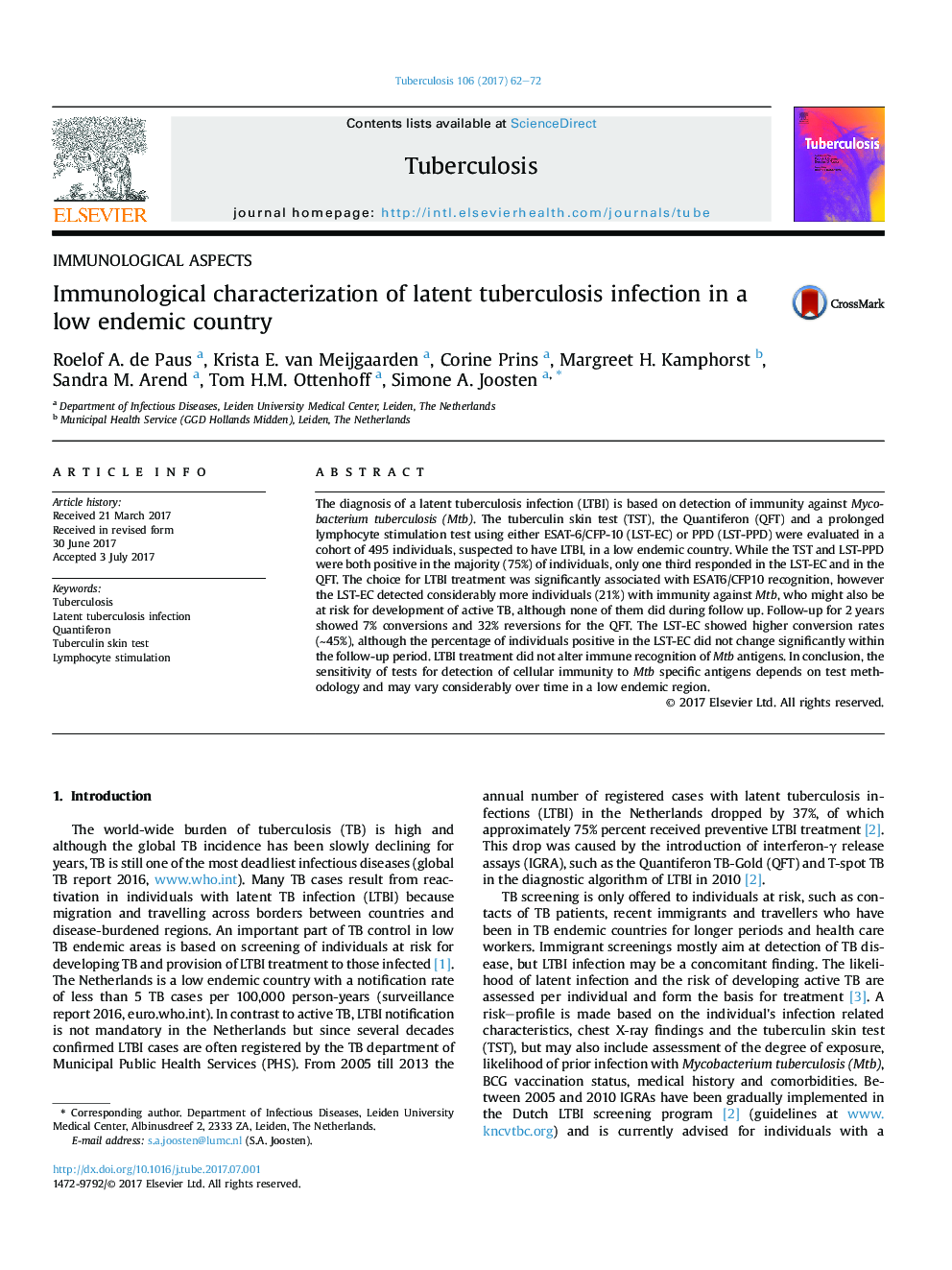| Article ID | Journal | Published Year | Pages | File Type |
|---|---|---|---|---|
| 5536262 | Tuberculosis | 2017 | 11 Pages |
Abstract
The diagnosis of a latent tuberculosis infection (LTBI) is based on detection of immunity against Mycobacterium tuberculosis (Mtb). The tuberculin skin test (TST), the Quantiferon (QFT) and a prolonged lymphocyte stimulation test using either ESAT-6/CFP-10 (LST-EC) or PPD (LST-PPD) were evaluated in a cohort of 495 individuals, suspected to have LTBI, in a low endemic country. While the TST and LST-PPD were both positive in the majority (75%) of individuals, only one third responded in the LST-EC and in the QFT. The choice for LTBI treatment was significantly associated with ESAT6/CFP10 recognition, however the LST-EC detected considerably more individuals (21%) with immunity against Mtb, who might also be at risk for development of active TB, although none of them did during follow up. Follow-up for 2 years showed 7% conversions and 32% reversions for the QFT. The LST-EC showed higher conversion rates (â¼45%), although the percentage of individuals positive in the LST-EC did not change significantly within the follow-up period. LTBI treatment did not alter immune recognition of Mtb antigens. In conclusion, the sensitivity of tests for detection of cellular immunity to Mtb specific antigens depends on test methodology and may vary considerably over time in a low endemic region.
Keywords
Related Topics
Life Sciences
Immunology and Microbiology
Applied Microbiology and Biotechnology
Authors
Roelof A. de Paus, Krista E. van Meijgaarden, Corine Prins, Margreet H. Kamphorst, Sandra M. Arend, Tom H.M. Ottenhoff, Simone A. Joosten,
